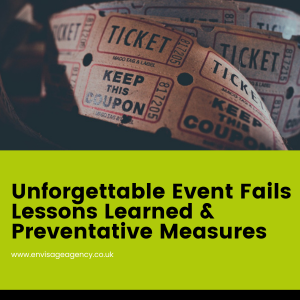Elevate Your Event with Our Free Downloadable Resources Planning an event is no small feat—every…
Part 2 – Optimising Social Media Marketing
In the first article art of this three-part series, we took a look at why utilising social media as a marketing tool is beneficial for a brand. In this second part, we take a closer look at creating a social media marketing strategy and how to go about it.
5 steps to a social media marketing strategy that works
A strategy gives rise to a plan and when you have a plan, you know what it is your setting out to do and why. You’ll also determine that the indicators of success are because understanding what has worked (and what hasn’t) is important for future social media marketing campaigns.
STEP 1- Know your audience
Understanding your customer means understanding which social platforms they are more likely to use. Not only will you be able to utilise the power of the right social media platforms, but you’ll also create content that attracts their attention.
STEP 2 – Choose your platforms
Different social media platforms appeal to different users, defined by age in many cases. This isn’t the only criteria so its worth spending time taking a closer look at who the users of the various social media platforms are.
Just as important, is understanding why people use the platform too. For example, LinkedIn is a growing platform for professionals and has its place for those B2B companies. Instagram is a highly-visual platform, great for showcasing your product or brand with high-quality photos.
Check out the latest summaries of social media users across the globe.
Concentrating on two or three platforms, delivering high-quality content that engages your followers delivers better results and is easier to manage than spreading your social media marketing efforts too thinly. With social media, it is quality over quantity!
STEP 3 – Create content
Content must be unique, engaging and tailored for each specific platform. Your content needs to stand out so that browsers become followers and possibly customers too.
The temptation is to see social media marketing through the same lens used for other marketing campaigns and tools – that is, to sell or to promote who you are and what you do. Whilst this should be a part of your social media marketing, it should be a small part of the content your post.
What is it that your customers and followers want to know about you and your product?
Don’t forget to let your brand voice and persona come to life via social media marketing too!
STEP 4 – Consistent posting and updates
A flurry of tweet every now and then or posting 4 times a day on Instagram for a week is not going to get you far very quickly.
With consistent, optimal posting on social media platforms, you will soon begin to notice an upswing in followers, comments and interaction.
The key is similar to blogging – regular, consistent posting of high-quality content on the social media platforms you have opted to use. What it doesn’t mean is sitting at your PC posting content and monitoring responses 24 hours of every day.
There are scheduling tools to help you maintain a calendar of consistent posting. You can experiment with posting content on different days and at different times to see when responses and engagement are at their highest.
You can also use a social media scheduling tool to plan future marketing campaigns, perfect for dovetailing online and offline marketing.
But don’t forget to be human too. Scheduled posts are all well and good but followers appreciate knowing that there is a real person at the other end of the comments box and not just a bot.
STEP 5 – Measuring success
Like any strategy, measuring how well it delivers is key to success. There are many metrics you can measure with a social media campaign;
- Engagement – these include the number of likes, comments, replies etc. to your posts. The more the better!
- Reach – this is the number of people who have seen content associated with your page or profile.
- Followers – known as a vanity metric, this is the number of people following your page. Don’t be tempted to swell your numbers quickly by buying followers!
- Impressions – are the number of times someone sees content related to your brand whether they clicked on your profile or not.
- Shares and re-posts – these metrics indicate how much your content is being shared. The more your content is shared, the more impact it has.
- @mentions – this is when someone directly links to you in their content with a direct mention with your @name or handle.
Social media platforms provided business users with analytics so you can track how well your content is impacting on followers and how fast your page is growing.
In summary
A social media marketing strategy should be detailed. Without the finer detail, optimising your online marketing campaign simply won’t happen.
In part 3, we look at how to become more proficient and expert in using social media for your brand and online marketing.



